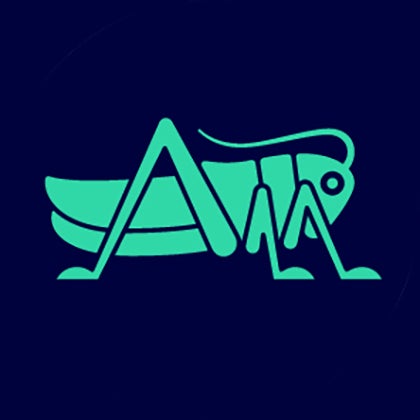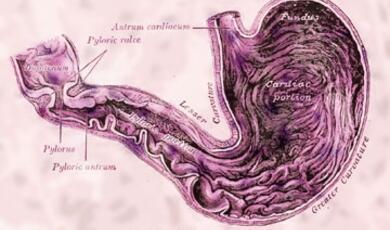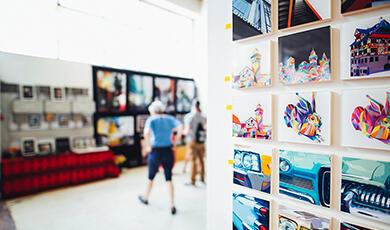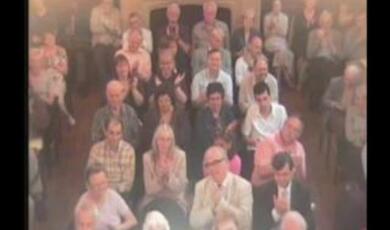New social benefits from an old Docklands discovery
Share
- Details
- Transcript
- Audio
- Downloads
- Extra Reading
2006 marks the sesquicentenary of William Perkin's discovery of mauveine. New research on his life and hundreds of accounts of his discovery have revealed hitherto unrecognised medical motivation for his work, together with a need for better ways of encouraging young and old to share Perkin's concern to make significant advances in the sciences yield net social benefits.
Download Transcript
NEW SOCIAL BENEFITS FROM AN OLD DOCKLANDS DISCOVERY:
THE LIFE AND WORK OF WILLIAM PERKIN
Dr David Leaback
2006 marks the sesquicentenary of William Henry Perkin’s discovery of the world’s first successful synthetic dyestuff—mauveine. Since that discovery, the event and its developments have been commemorated a considerable number of times—including major meetings on the subject in 1906; 1907; 1938; 1956; and 1988. On those occasions, and between times, several relevant books and booklets have been published, together with a great number of papers and articles on the subject.
The speaker has reviewed several hundred of such references (including those in textbooks and reference works; see Leaback, D.H, Science & Public Affairs, [1994], pp.25-29 ), and has concluded that they tend to conform to what might be called ‘ The Basic Perkin Story’. This tends to run as follows-
William Henry Perkin was born in London’s East End in 1838. His father, George Fowler Perkin, was a local builder, living and working in London’s docklands. He sent William to the City of London School, and he strongly wanted his son to train as an architect. When William was about 13 years old, a friend showed him some simple crystallisation experiments. Thereafter William showed firm intent to study chemistry—much to his father’s disapproval. A teacher from William’s school persuaded George Perkin to let his 15 year old son attend a College in London’s Oxford Street, to study chemistry under Professor Hofmann. Within 2 years William was carrying out chemical research both at the college and in a makeshift laboratory in his father’s house. Hofmann told his students that such research should be carried out to increase knowledge and for social benefits. For example, it would be a great social benefit if someone were able to make synthetic quinine in the laboratory. William thought about this and, using the kind of analytic thinking of that period, thought he might be able to promote such a desirable synthesis of quinine if he oxidised an aniline compound he had made in the Oxford Street laboratory. He tried this experiment in his makeshift home laboratory during the Easter vacation of 1856—but after several attempts he isolated not the white fluorescent crystals of quinine, but a dark material which could dye silk a beautiful new mauve colour.
After much heart-searching, hesitation, consultation and delay William decided to leave the College and, with backing
from his family, resolved to build a factory at rural Greenford Green, near Harrow, Middlesex.
Professor Hofmann was strongly against this decision, but William and his brother Thomas persevered, and in an incredible 18 months, were producing and marketing commercial quantities of the dyestuff. A craze for the new colour developed in women’s fashion, and the initial success of the venture was assured. William married his cousin Jemima, and they set up home in nearby Sudbury, Middlesex.
This Basic Perkin Story would typically proceed and terminate by stating that the Perkin brothers worked hard for another 16 years, made a fortune from their enterprise; sold it for a handsome sum, and both retired in their thirties to live in large houses in nearby local rural settings.
From the data in Fig 1 it can be seen that, in the 255 publications concerned, most public attention has been directed towards the earliest part of the Perkin Story—since that was the most frequently quoted. And note that while the jubilee and obituary parts (Vl and Vll) were respective next in number, that probably reflected back-references to the heroic (1853-1858) events contained within the earliest part of the story. Note also the apparent public disinterest in Perkin’s life and work in most of the periods between parts l, Vl and Vll.
Thus it can be seen that the most publicly-attractive part of the story (l) corresponds largely to that termed above ‘The Basic Perkin Story. Using that version of the story, the speaker obtained the responses shown in Fig.2 from a variety of relevant audiences prior to the presentations. In each case the audiences were asked to show a hand up if they had heard of W. H. Perkin before the lecture. Not surprisingly, there were strong responses from scientific society audiences—but poorer positives from Greenford and Sudbury (where Perkin had lived and worked). Apparently, most surprisingly, there were no positive responses from where Perkin actually made his discovery (Tower Hamlets) or where the Perkin and Sons enterprise finally ended (Hackney).The latter negatives were ascribed to the poor, very rapidly changing ethnicities of the populations in those localities.
The speaker had noticed that young children of almost any background, responded well to such a heroic tale of a young person triumphing over the preferences of their elders, as that contained within the above ‘Basic Perkin Story’. He started presenting that (and other) good science stories to 10-11 year olds in Junior Schools—including one such school in the
very street where Perkin had made his discovery. Indeed, part of that story was presented to the children on a summer’s day and on the grass, outside a council block of flats where George Perkin’s house had once stood.
Afterwards, the 24 children wrote up to two A4 pages of their versions of that experience and story. Those scripts have been analysed by the speaker for key words and ideas relating to the events concerned. The results are shown in Fig.3 –and indicate that the elements which caught the children’s imagination most were:
Column l. ‘The story took place near our school’.
Column lll. ‘Father George & Will Perkins’ argument on son’s future’.
Column Vl. Will tried to make artificial quinine but makes a new purple dye.
In the later round table discussion with the children following their written work, it was clear how they, and their parents, valued hearing of a youngster not much older than themselves having made an important discovery in their neighbourhood. However, we did begin to touch on the fact that the story I told was, in real life, not without trouble and uncertainties before it was brought to commercial success. Thus having made some progress in forwarding this in Tower Hamlets, one of the most unpromising neighbourhoods identified in Fig.2, the speaker researched the science –related stories of two other youngsters who were associated with another underprivileged part of London—Michael Faraday and John Newlands, who were both born and brought up in Southwark’s Elephant & Castle neighbourhood.
The speaker produced both the ‘Michael Faraday Story’ and the ‘John Newlands Story’ and told them in junior schools close to the places where the original events took place ( see Leaback,D.H; Re-weaving Rainbows’or, ‘Some Southwark Science Tales’; Authentica Publications, Radlett, Herts,[2000]). These two science stories had much the same encouraging results—but the Newlands Story presented at one school engaged the schoolchildren so much
that they asked if they could act it. This was done before the whole school concerned, before the friends and relations of the children and, to great acclaim, before delegates to an international conference on the Periodic Table at South Bank University.
This departure has opened up not only new ways of promoting science to the community at large, but also a means of getting human aspects of science discussed and considered by sections of the population not accustomed to doing so.(see Leaback, D.H, Science & Public Affairs,[2002], pp.18-19). Since that Newlands Story drama, ten more local science stories have been produced by the speaker—notably, a series of performances at Guy’s Hospital illustrating how science-based medicine has developed at Guy’s & St. Thomas’s Hospitals over the past 200 years, and showing how that modern kind of medicine works (see Leaback, D.H. in GKT Gazette,116, [2003], 768-770; 116,[2003], 964-067; 119 [2005],1310-1314).
The culmination of that series was an April 2006 performance of the speaker’s Wonderful Kidney Story’. This was performed by 6 year olds, who illustrated to young and old how kidneys work, can go wrong, may be relieved by dialysis or transplantation—provided that donor kidneys become available. (Fig.5). Thus these performances were not only informing the public how to look after their kidneys, but also exhorting them to pass on those organs if and when they can possibly do so. Another new potential social benefit from this work, arises from the revelation that average 6 year olds are very capable of understanding quite complicated scientific aspects of cell biology etc. As things are, 6-ll year olds rarely get the chance to learn of such things.
Useful though the Perkin Story concerned in Fig. l, etc. has been in these studies, much more detailed researches on Sir William Perkin’s life and work have revealed the troubled and harsh circumstances that accompanied even his earliest years. So much so that the speaker suspects realities behind the simplified story outlined here. Indeed the speaker has indications that after the youthful William Perkin attended the Gresham College lectures in 1852, and later embarked upon Hofmann’s challenge to make synthetic quinine, he did so with a strong desire to start contributing to remedial medicine, with the ailments around him in London’s East End firmly in mind.
Useful though Fig. l has been, the gaps of apparent public interest therein are instructive. Thus the period 1861- was dreadful for William Perkin personally and the dyestuff firm was near to failure before his research offered a second phase of prosperous dyestuff development from 1868.
Around 1873 further threats of industrial disaster loomed, until a naïve partnership of Brooke Simpson & Spiller agreed to buy the Perkin & Sons enterprise. Even then a prolonged court case relating to that sale was not settled until 1876. Only then could William Perkin begin to enjoy his retirement, family, music and wealth. Regarding the latter, he lived quite simply, but in a large house with a large garden. He converted his old house into a laboratory and sporadically carried out research there on optical rotary dispersion by organic compounds—but it never amounted to very much. He also built a New Hall meeting place nearby, where local people (including children) could gather for cultural, social, religious and other community purposes.
In 1906, this was the scene of great celebrations to mark the jubilee of the great dyestuff discovery he had made 50 years earlier. In October 2006 the speaker is planning a meeting at the Sudbury Methodist Hall and Neighbourhood Centre (which replaced Sir William’s New Hall) to unveil a commemorative plaque there and produce a play to be performed by children from Sudbury Junior School—depicting scenes from the Sudbury Perkin Story. The aim is that a further social benefit may arise here in the spirit of Sir William’s original intent—to provide a meeting place for all the growing communities of Sudbury.
Legends to Figures
Fig.1. Cumulative numbers of references in 255 publications on Perkin’s life and work, related to
successive parts of his life span.
Fig.2. Averages of hands-up responses (numbers in parentheses) of the various audiences
indicated, to the question, ‘Did you know of William Henry Perkin before you saw a notice
of, or came to, this meeting’?
Fig.3. Cumulative numbers of key words or ideas used by a class of 24 Tower Hamlet’s 10-
11 year olds in their written accounts of ‘The Perkin Story’ told by the speaker.
Fig.4. The Gresham College building in Gresham Street where William Perkin probably
attended lectures on Physic, in 1852.
Fig.5. Shows 6 year old schoolchildren demonstrating how kidneys work—in a rig simulating
a human nephron temporarily constructed on the pews in Guy’s Hospital Chapel.
© Dr David Leaback, Gresham College, 9 May 2006
This event was on Tue, 09 May 2006
Support Gresham
Gresham College has offered an outstanding education to the public free of charge for over 400 years. Today, Gresham plays an important role in fostering a love of learning and a greater understanding of ourselves and the world around us. Your donation will help to widen our reach and to broaden our audience, allowing more people to benefit from a high-quality education from some of the brightest minds.


 Login
Login






